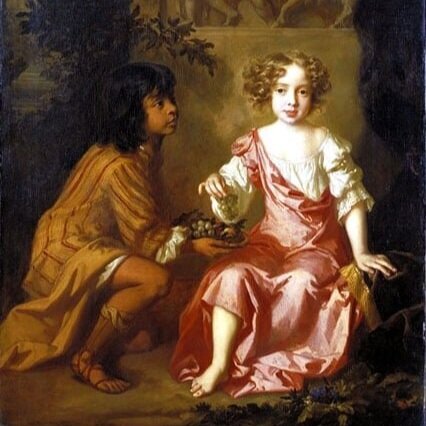“…important social and historical processes occur within language…”
— Raymond Williams, Keywords (1976)
‘Keywords’ is a postgraduate series that aims to locate points of interconnection across discipline and faculty: from the coexistence and specialisation of meaning(s), to obsolescence, imposition, and change. Each post is by a student at postgraduate level, taking the research interests of the individual as a framework through which to interrogate a problematic and/or familiar term. In the process, indeed, through this process, we hope to construct something of an alternative ‘early modern vocabulary’, one that asks new questions about the ways in which we use — and have used — language in different places, and at different times.
Use the Word Cloud or the Search-Bar at the bottom of this page to filter entries by shared themes and points of contact.

Imperialism
Ameera Gill locates imperialism within the cultural and political discourse of early modern England.

Soundscapes
Josefina Venegas Meza accents the importance of soundscapes to the recovery of Shakespearean drama.
Use the Word Cloud to group posts by shared theme. You can reset your filter by clicking here.
- Agriculture
- Anachronism
- Archaeology
- Archive
- Art
- Astrology
- Audience
- Belief
- Biology
- Body
- Class
- Climate
- Colonialism
- Comedy
- Court
- Criminology
- Critic
- Cultural Identity
- Domestic
- Drama
- Earth
- Education
- Empirical
- Enlightenment
- Europe
- Facts
- Family
- Fashion
- Food
- Foreign
- Gender
- Health
- Horticulture
- Humanism
- Immigration
- Imperialism
- Institutions
- Kingship
- Knowledge
- Language
- Literature
- Logic
- London
- Magic
- Material Culture
- Media
- Medical
- Medicine
- Metaphysics
- Milton
- Morality
- Nation
- National Identity
- Networks
- Non-Human
- Parliament
- Performance
- Phenomenology
- Philosophy
- Playhouse
- Poetry
- Politics
- Private
- Property
- Psychology
- Public
- Pyschoanalysis
- Real
- Reason
- Reflection
- Religion
- Representation
- Rhetoric
- Ritual
- Scholasticism
- Science
- Secular
- Self
- Semantics
- Sense
- Shakespeare
- Social Identity
- Society
- Sociology
- Sound
- Space
- State
- Status
- Technology
- The Other
- Time
- Tourism
- Trade
- Translation
- Travel
- Truth
- Vernacular
- Witchcraft
- Writing
Or search the series by way of a term or phrase of your choice:
‘Keywords’ Image Bibliography
Ambiguity: Image from Page 33 of Ramon Llull, Illuminati sacre pagine p.fessoris amplissimi magistri Raymundi Lull. Ars magna, generalis et vltima (Lyon, 1517). License: Flickr, Internet Archive.
Blood: Leonardo Da Vinci. The Heart and Coronary Vessels. c. 1511-13. Royal Collection Trust RCIN 919073 (Verso) / © Her Majesty Queen Elizabeth II 2021.
Cosmopolite: `Abd al-Rahman al-Sufi. Kitab Suwar Al-Kawakib Al-Thabita (Book of the Images of the Fixed Stars) of Al-Sufi. Late 15th Century. The Metropolitan Museum of Art, New York.
Criticism: Rembrandt van Rijn. Satire on Art Criticism. 1644. The Metropolitan Museum of Art, New York.
Definition: ‘Folio 61’ from Aristotle. Methodus utililter Philosophandi Aristotelis disputata in Gymnasio monasteriensi. 1643. Manuscripts/1/332. © Chetham's Library.
Disenchantment: ‘Illumination depicting the two witches on a broomstick and a stick’ in Martin Le Franc. Le Champion des dames (1451).
Distraction: Anon, after Meester E.S. De Verzoeking van de Heilige Antonius. c. 1474. Rijksmuseum, Amsterdam.
Dream: Style of Rembrandt van Rijn. Jacob’s Dream. 17th Century. Courtesy National Gallery of Art, Washington. (CC0).
Emotion: Jörg Breu the Elder. The Four Temperaments. 1500-1537. The Metropolitan Museum of Art, New York.
Engrave: Niklaus Manuel. St Eligius in the Workshop. Kunstmuseum, Bern.
Flowers: Discorides. De Medica Materia or The Greek Herbal of Dioscorides, trans. John Goodyer, ed. Robert T. Gunther (1655/1934), fol. 67v.
Graffiti: Anon. Roman Still Life Painting from Pompeii. 1st Century. Museo Archeologico Nazionale, Naples.
Imperialism: Sir Peter Lely. Portrait of Lady Charlotte Fitzroy with her Indian Page. c. 1669-79. © York Art Gallery.
Material: C. Walter Hodges. Stage Setting Design. Folger Shakespeare Library, ART Box H688, no. 1 pt. 4 (LUNA: Folger Digital Image Collection). (CC BY-SA 4.0).
Maternity: Gabriël Metsu. Het Zieke Kind. c. 1664-1666. Rijksmuseum, Amsterdam.
Meditation: Anon. Dervish Seated Under a Tree. c. 1627-1658. Museum Number 1949,0212,0.5 © The Trustees of the British Museum.
Mirror: Anon. A Man Looking at his Reflection in a Mirror with a Dog at his Feet. Gouache Painting by an Indian Artist (?). Wellcome Library no. 582619i. (CC BY 4.0).
Patronage: Emery Walker Ltd, after Remigius Hogenberg. Queen Elizabeth I as patroness of Geography and Astronomy. Early 20th Century (1579). The National Portrait Gallery, London. NPG D31837. (CC BY-NC-ND 3.0).
Prosthesis: Ambroise Paré, La methode curative des playes, et fractures de la teste humaine. (Paris, 1561). Wellcome Collection. CC BY 4.0.
Promptbook: ‘Front Outside Cover’ from PROMPT M.N.D. 06 / A Midsummer Night’s Dream (J. Tonson, 1734). LUNA: Folger Digital Image Collection. (CC BY-SA 4.0).
Refugee: Engraving by David Ulrich Böcklin. Lutherans Leaving Salzburg from Die Freundliche Bewillkommung der Saltzburgischen Emigranten (Leipzig, 1732). Rare Book Division, The New York Public Library Digital Collections.
Safety: Vittore Carpaccio. ‘Detail’ from The Meditation on the Passion. ca. 1490. The Metropolitan Museum of Art, New York.
Self-esteem: William Blake. Illustration 6 to Milton’s ‘Paradise Lost’: Raphael Warns Adam and Eve. 1807. The Huntington Library, Art Museum, and Botanical Gardens. Object Number 000.7.
Soil: Illustrated by the Workshop of Simon Bening. Calendar Scene for September from The Golf Book. (Bruges, c. 1520-30). British Library Add. 24098, f.26v.
Soundscapes: C. Walter Hodges. Watercolor Sketch of the Globe Stage. Folger Shakespeare Library, ART Box H688, no. 1 pt. 31 (LUNA: Folger Digital Image Collection). (CC BY-SA 4.0).
Truth: E. Sachse & Co. View of Washington City. (Baltimore: Lith. by E. Sachse & Co, 1871). Map. The Library of Congress.
Wager: David Teniers (II), The Gamblers. c. 1640. Rijksmuseum, Amsterdam.
Will: René Descartes. L’homme de René Descartes, et la formation du foetus (Paris: Compagnie des Libraires, 1729).
Editor: Jonathan Powell (2021-23)